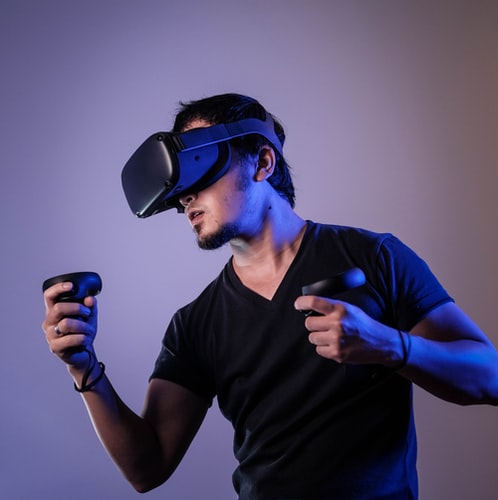What Is VR?
Virtual reality takes these same components to another level by producing an entirely computer-generated simulation of an alternate world. These immersive simulations can create almost any visual or place imaginable for the player using special equipment such as computers, sensors, headsets, and gloves.
What's the Difference Between the Two?
The distinctions between VR and AR come down to the devices they require and the experience itself:
- AR uses a real-world setting while VR is completely virtual
- AR users can control their presence in the real world; VR users are controlled by the system
- VR requires a headset device, but AR can be accessed with a smartphone
- AR enhances both the virtual and real world while VR only enhances a fictional reality
Jobs in the VR and AR Industry
These new, evolving technologies produce endless opportunities for businesses and employment—By 2022, the AR and VR market is projected to grow to $209.2 billion. VR and AR are transforming industries through software and hardware development, graphic design, research, and more.
In-demand careers developing and improving VR and AR technology include:
- Software engineering and development
- Project management
- Software maintenance
- Graphic design
As virtual and augmented reality become more entwined in how we work, play, and learn, the industry will only continue to grow. The digital design program at Tulane School of Professional Advancement connects design and innovative technology to help students stay on the cutting edge of these industries while turning their passion into a career. Take the first step and request more information about SoPA today.





